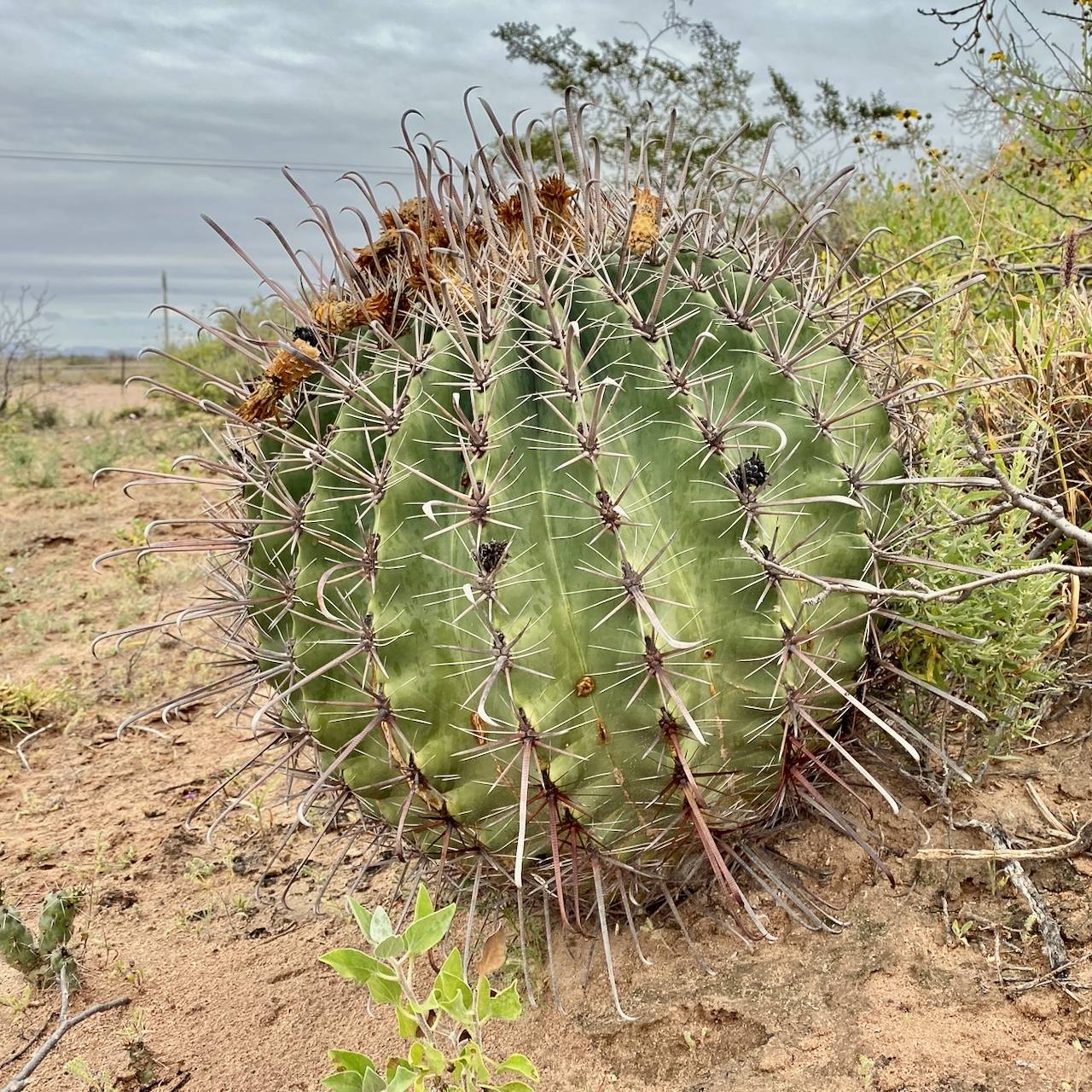
|
Family: Cactaceae |
Plants erect or leaning, unbranched (rarely branched after apical injury) or sparingly branched from base with age in F. hamatacanthus and F. viridescens [or many branched], deep-seated in substrate only in F. viridescens. Roots diffuse. Stems unsegmented, green, ovoid, spheric, depressed-spheric, or cylindric [or flat-topped and flush with soil surface], (0-)10-150(-300) × 7.5-80(-100) cm, glabrous; ribs [8-]10-32(-40), very prominent, rib crests straight or undulate, uninterrupted (deeply crenate in F. hamatacanthus or sometimes nearly tuberculate in immature plants); areoles nearly circular to oblong or elliptic, with fertile portion as short adaxial prolongation confluent with spine cluster or connected to spine cluster by very broad groove, short woolly; areolar glands usually present, sometimes very short and inconspicuous and/or short lived, adaxial in areoles, ovoid to cylindric, blunt, peglike; cortex and pith hard, not mucilaginous. Spines 6-32 per areole, yellow, brown, or reddish to salmon with color hidden by very thin, light gray layer, usually large and coarse, annulate-ridged (smooth in F. hamatacanthus), longest spines 30-130(-170) × 0.5-4.5 mm; radial spines 6-25 per areole, straight to curved, or crinkly bristles, 15-70 mm; central spines 1-4 per areole, flattened, angled, or terete, all or only largest adaxial spine hooked. Flowers diurnal, near stem apex, on large plants often several cm from stem apex, at adaxial edges of areoles (or at axillary end of short areolar groove), funnelform, 2.5-8.5(-10) cm; outer tepals margins entire [fringed]; inner tepals yellow, orange, red, or purple (or white with purplish midstripes); ovary scaly, hairless, spineless; scales numerous, broadly rounded to lanceolate, margins ± scarious, minutely to conspicuously fimbriate or denticulate, obtuse; stigma lobes 13-20, yellow, orange, or red, unusually long, 7.5-15 mm. Fruits weakly dehiscent through basal pore (indehiscent in F. hamatacanthus), green, yellow, brownish, or dull purple-red [to bright red], spheric, ovoid, or cylindric, 20-60 × 10-40 mm, thick walled, leathery, hollow except for seeds and long persistent (thin walled and juicy in F. hamatacanthus), with numerous scales, spineless; pulp whitish or, if fruit hollow, absent; floral remnant persistent, dried tepals often remaining distinct, papery, and straight or wavy. Seeds black or dark brown, Recent molecular studies by C. A. Butterworth et al. (2002) suggested that Ferocactus may be an artificial assemblage of primitive species not closely related to each other.
|
This project was made possible in part by the Institute of Museum and Library Services [MG-70-19-0057-19].
Powered by Symbiota



